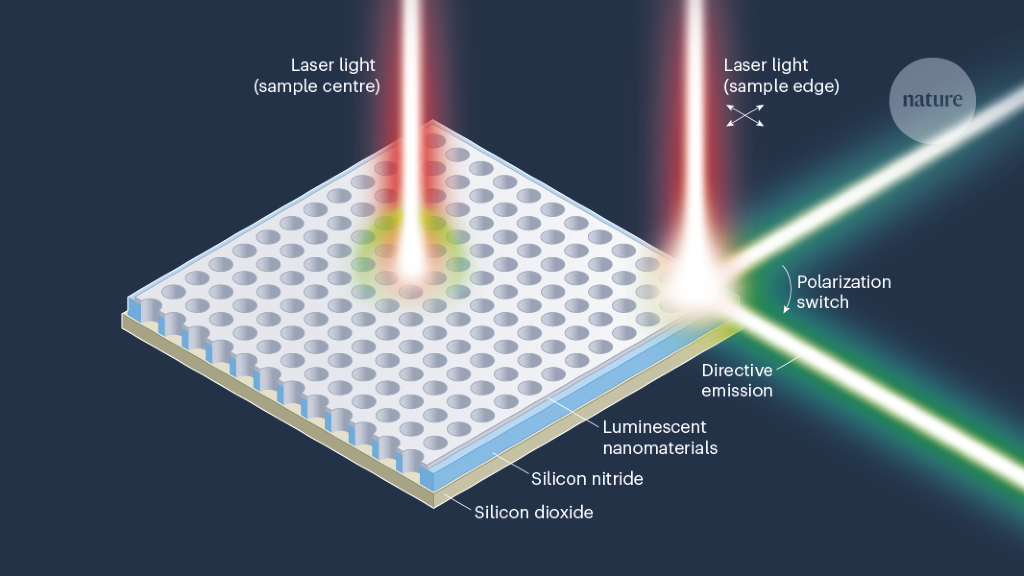Enhancing Light Intensity with Nanotraps for Optical Devices
Core Concepts
The author discusses the innovative use of nanotraps to boost light intensity in optical devices, addressing limitations faced by traditional light sources and resonators.
Abstract
Intense light beams are essential across various fields but are challenging to produce with conventional methods. Lasers can generate intense light by trapping it in an optical resonator, but limitations exist due to material properties. Schiattarella et al. present a novel approach in Nature that allows for increased light intensity up to 36,000 times by controlling the escape of light from a nanoresonator.
Nanotraps boost light intensity for future optical devices
Stats
Light intensity increased by a factor of up to 36,000.
Quotes
Key Insights Distilled From
by Kirill Koshe... at www.nature.com 02-21-2024
https://www.nature.com/articles/d41586-024-00311-5
Deeper Inquiries
How can the concept of nanotraps be applied in other areas beyond optical devices
The concept of nanotraps can be applied in various other areas beyond optical devices. One potential application is in the field of quantum computing, where precise control over light intensity and interactions at the nanoscale are crucial for manipulating qubits. Nanotraps could enhance the efficiency of trapping and manipulating photons or other particles used in quantum information processing. Additionally, nanotraps could find applications in advanced imaging techniques, such as super-resolution microscopy, where increased light intensity can improve resolution and image quality. Furthermore, nanotraps may have uses in energy harvesting technologies by enhancing light absorption efficiency in solar cells or photodetectors.
What potential drawbacks or criticisms could arise from implementing nanotraps for boosting light intensity
While nanotraps offer significant advantages in boosting light intensity for optical devices, there are potential drawbacks and criticisms that could arise from their implementation. One concern is related to the fabrication process of these nanostructures, which may be complex and costly depending on the materials used and required precision levels. Another drawback could be related to scalability issues when trying to implement nanotraps across large surface areas or volumes. Additionally, there might be challenges associated with optimizing the design of nanotraps to achieve maximum light confinement without introducing unwanted effects like heating or material degradation.
How might advancements in nanotraps impact the future development of ultraprecise sensors
Advancements in nanotraps have the potential to significantly impact the future development of ultraprecise sensors by enabling higher sensitivity and resolution capabilities. By increasing light intensity through optimized trapping mechanisms, nanotraps can enhance signal-to-noise ratios in sensor systems operating at the nanoscale. This improvement allows for more accurate detection and measurement of tiny signals or changes within a system, making ultraprecise sensors even more reliable for various applications ranging from biomedical diagnostics to environmental monitoring. The enhanced performance offered by advanced nanotrap designs could lead to breakthroughs in sensor technology with improved accuracy and detection limits.
0
